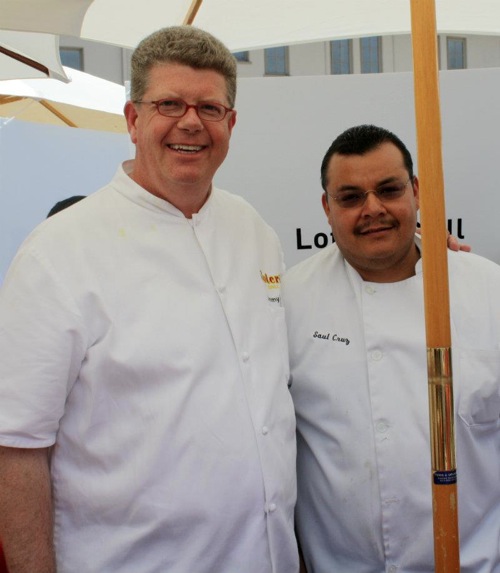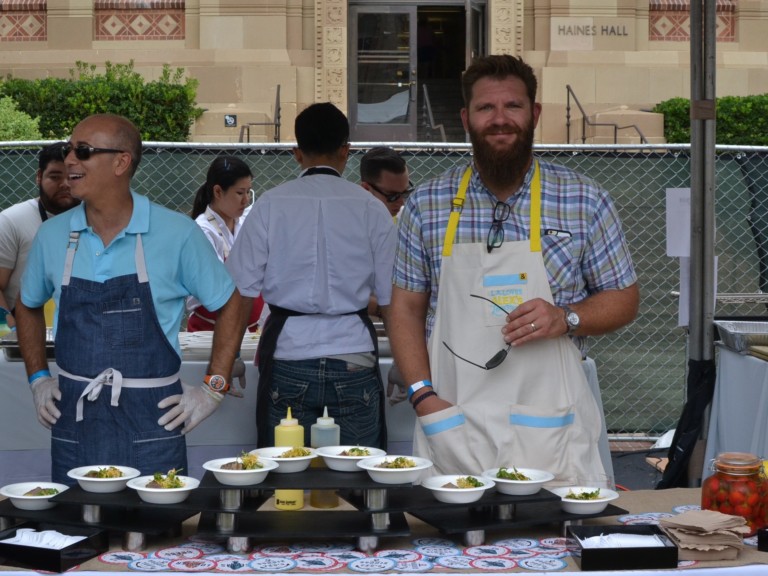With a lead-in by Science and Food program director Amy Rowat about the properties of viscosity in food, Loteria Grill chef-owner Jimmy Shaw took the stage this past Saturday morning at UCLA with a talk on viscosity and thickeners in Mexican food. Rowat’s prelude showed the types of thickeners and thickening agents that add viscosity and texture to food. Viscosity comes from a large number of ingredients, such as seeds, nuts, fruits, vegetables, chiles, and corn. More specifically these ingredients can include almonds, sesame seeds, peanuts, pumpkin seeds, plantains, raisins, calabaza (squash), and avocado. The breaking down of these thickening ingredients comes from three main devices: el metate (stone grinder), el molcajete (mortar and pestle), and la licuadora (commercial blender), the last of which everyone got a little laugh from. It’s true though, as the la licuadora is the most commonly used device in commercial kitchens.
Shaw showed a demonstration of how a simple breakdown of corn as a base produces various dishes with the development of its viscosity. You start with atole, a Mexican power breakfast, with a very filling corn beverage that comes after blending corn hominy and water and warming it until it becomes slightly thickened. If you add chocolate to this beverage, it becomes a champurrado. You can also create a nicuatole, a pudding-like dessert that we were able to sample, and eventually a more detailed tamal colado, an even thicker savory-pudding dish that’s wrapped in banana leaf and steamed.
He also showed us some of the thickeners of mole Poblano, which include nuts and raisins. The compelling part of his portion of the day’s lectures was the introduction of various ingredients that change the viscosity of dishes. Texture adds flavor, mouthfeel, and dimension to dishes that are unique to Mexican cuisine, from moles to tamales. He extolled the role of maize (corn) in Mexican cuisine, showing some of its various renditions and their respective textures. In all, it was a simple demonstration of how centuries-old techniques in Mexico still stand true despite advances in food science.









Leave a Comment